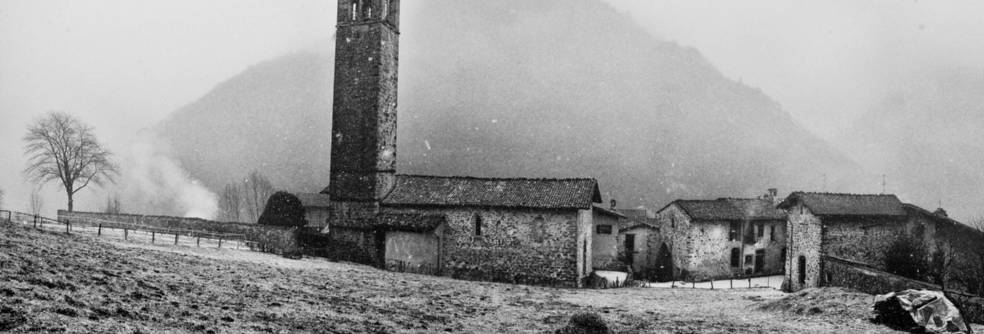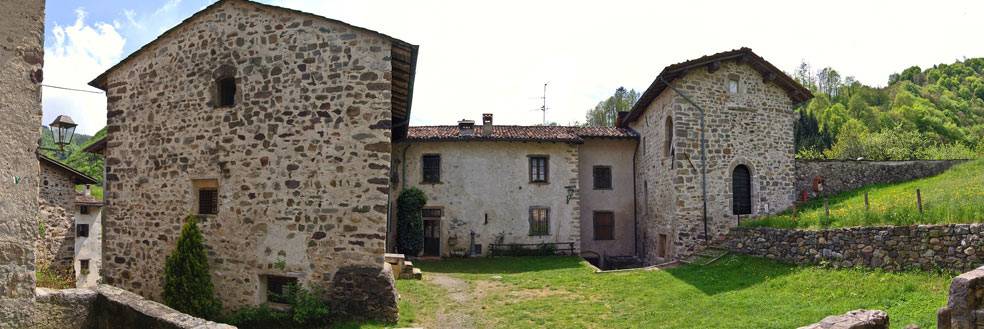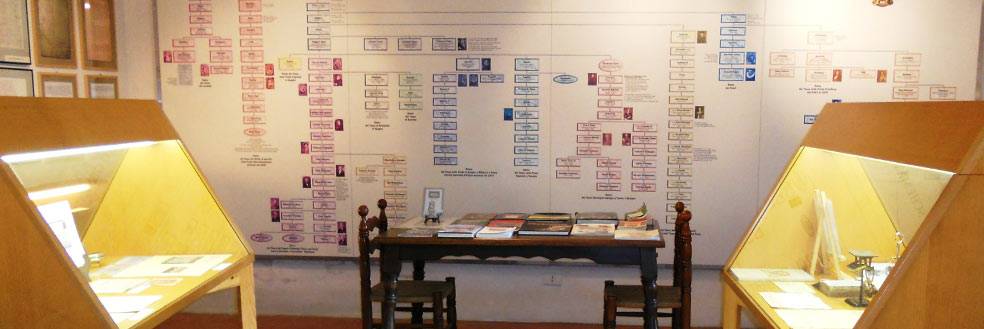The delivery of mail
Over the centuries, the development of the mail delivery had various characteristic forms of evolution for each age, which can be summarized as follows:
1) In a first period, the delivery of letters was free and open to anyone who wanted to deal with: every city had its own couriers. Merchants used to gather to entrust their important letters to private couriers, which were in strategic points, and once received the letters, left to their destinations. Princes exchanged messages with their own messengers, pilgrims committed themselves to deliver the letters in the cities located along their path, universities organized their own couriers who maintained cultural contacts with other universities, in the same way as the Conventual Friars;
2) few centuries later, the rulers became aware of the importance of the postal service control as a source of revenue and information, and claimed the royal right to manage the transport of mail in a monopoly system (jus postale);
3) So many postal territories were created as for individual States: the letters were passed from one state to another in exchange for money, thus causing the need for early agreements between states to regulate the transport of letters;
4) Between 1700 and 1800, an enormous development of the correspondence became evident for effect of the analogous development of the industrial society. The traditional postal system run into crisis, forcing governments to reorganize the postal service first with the introduction of the stamp, as a simplification of the entire system, then with the foundation of the UPU, Universal Postal Union, with the aim of creating a single global postal system.
Means of delivery of letters: the epic of mail coach
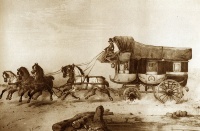
Even means of delivery of letters underwent many changes over the centuries. Soon, the horse was not enough to ensure an efficient transport: this animal has no so much strength, and after a ride, needs to rest, so at the time of its use by couriers, it caused delays. Moreover, in case of snow or rivers crossing, the horse was a trouble to the normal race, rather than an advantage. It was necessary, for these reasons, to build post stations along the path where the horse could be immediately replaced by another one fresh and rested that could resume the path with full efficiency. The post stations were built at a constant distance from each other (approximately 20 km), and some people were responsible to make couriers find rested horses . Soon, however, the horse was not enough, because in addition to letters, couriers had also to transport parcels, so they needed more space. So the mail coach was introduced , and soon it was also used to transport some passengers of course against payment.
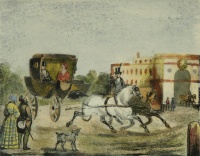
The post stations were transformed in eating places and hotels, as well as changes of horses, where the passengers could rest and eat. Even today, many traces of these post stations can be found along main roads, such as Hotels and Restaurants titled "the Post", in memory of those ancestors who often were located in the same building. The coaches got bigger and bigger to accommodate more travellers, often assuming different names that have been preserved to these days (for example, the omnibus, a mail coach specifically created for passengers, whose term is still used to show some kind of means of transport for passengers. The coach, whose name is still used to mean the bus for passengers, that has replaced the mail coach after the introduction of the motor).
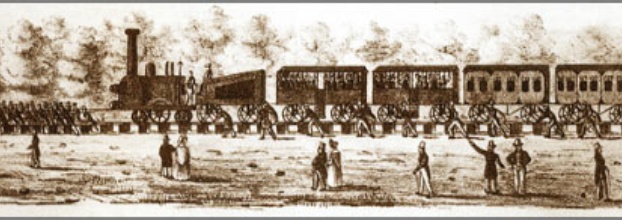
The post in step with progress: the railway
The need to delivery correspondence faster and safer, kept up postal service in step with the times.
The invention of the steam engine, dated back at the beginning of the year ''800, gave a great impetus to the improvement of postal transport, both on ships travelling regularly along the Italian coast, than on the new invention born with the steam engine, that is, railroad.
The invention of the railway, which took place in England in the early years of the '800, moved quickly across Europe, where governments raced to build new roads, just the railways, which ensured faster transport than the stagecoach.
The horses as means of transport, soon fell into disuse, at least along the main routes, and were replaced by the new mean, which, achieving unthinkable speeds for the time, reached the cities much more easily and with less troubles for passengers.
The postal service immediately used the railway to carry mail bags. Furthermore real mail carriages were built where letters used to be "worked", meaning that letters were directly received into the carriage without going first to the post office. Afterwards they were divided according to the destination, and finally transported and delivered to their recipients.
The development of the railway in Europe during 1800 afforded a similar development of postal service, which replaced the post stations with railway stations (keeping, however, the name "Station") and expanded and facilitated contacts between the citizens of Europe.
The post in step with progress: the navigation
Letters often travelled with ships, especially in long distances, keeping in mind that the roads were usually limited in space (very often, the transport by boat was preferred because rivers, streams and canals, are naturally predisposed and didn’t need to be built, apart from rare occasions, and required little maintenance).
All the States facing the sea, had more or less large ports, where the ships docked, bringing a lot of important goods from far away, which were distributed by merchants in the various markets of Europe.
The captains of ships, were often commissioned by merchants to carry letters, in return for payment, and this was, if not possible, at least tolerated by the authorities because there were no other alternatives for the transport of those letters across the sea.
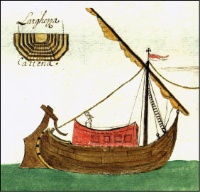
Even mail soon began to use the new mean and indeed it was the need to improve the postal service more and more, which sometimes led governments (as in the newly formed Kingdom of Italy, 1861) to entrust the Postal Service with the construction, through public money, of new ships more powerful, and to create new services and new shipping lines
In Italy, companies such as Ribattino of Genova, Florio of Palermo, and Austrian Lloyd in Trieste, signed favourable Conventions with their respective governments, in order to manage important shipping lines, and mail delivery services related with them.
(Adriano Cattani, director of the Tasso and Postal History Museum).



